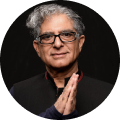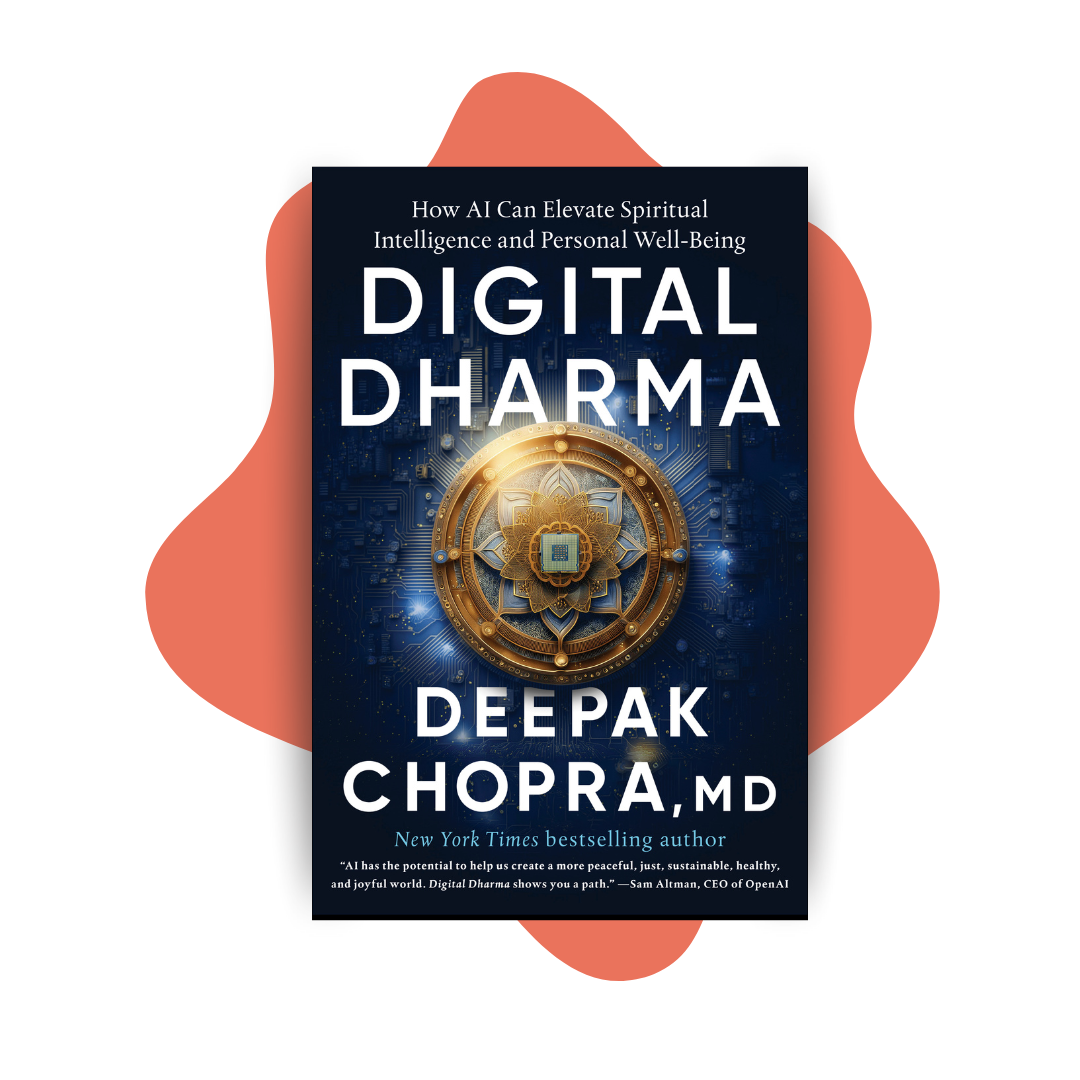What about Mindfulness?.
When your mind and heart are truly open abundance will flow to you effortlessly and easily.
In spiritual practice, the two “M” words, meditation and mindfulness, tend to blend, and although meditation is far more commonly practiced, mindfulness is important for Buddhists in particular. Sometimes you run across the mixed phrase “mindfulness meditation,” but it is worthwhile to explore the specific advantages of mindfulness on its own, which turns out to be a tricky subject.
The principal confusion centers on how to define mindfulness. Its ancient origins in India are Vedic, preceding any religious use in Hinduism or Buddhism. After centuries of usage, mindfulness has come to mean many things depending on who you talk to. Some examples:
- Mindfulness is basically the same as meditation for quieting the mind.
- Mindfulness is bringing your focus to the present moment, not the past or future.
- Mindfulness is “remembrance of the whole” rather than focusing on a specific thought.
- Mindfulness involves moral consideration of what you are doing, saying, and thinking.
The subject can get much more arcane than this thumbnail sketch indicates, but studies have shown that mindfulness practice as used by psychologists and psychiatrists has benefits to mind and body similar to meditation. If you want to learn mindfulness, the recommended techniques begin with following your breath and being aware of your body, surroundings, and thoughts.
So far, despite debates about how to define mindfulness, no one would argue against any of these practices, so where are the hidden aspects I spoke of? The answer lies in what your final goal is. Like casual meditation that people do here and there, casual mindfulness is more or less a Band-Aid for when someone feels stressed or depressed in a passing way.
More serious goals emerge if you see yourself on a spiritual path, in which case you might be aiming to acquire present-moment awareness permanently. In the same vein, your goal might be a quiet mind, inner calm, the absence of depression, or the quelling of negative emotions. Rarely in the West or among everyday people anywhere is enlightenment the goal.
Yet enlightenment may hold the key to everything. To reach enlightenment is a goal in consciousness, despite the trappings of religious and spiritual traditions. The simplest applicable synonym is awakening, where to be awake means to be self-aware around the clock, including in deep dreamless sleep. You are on the path to awakening by doing meditation and mindfulness practices, but this is by no means guaranteed. You are on the way to awakening when you expunge unconscious behavior and old conditioning, but not necessarily.
In fact, although this may sound shocking, you might be awakening by training yourself to be in the present moment, but not necessarily. There is no magic about the present moment, as witness the state of Alzheimer’s patients and the rare individuals who have lost their memory completely—both are forced by brain damage to be in the present, not to mention a disorder like paranoid schizophrenia, where hallucinatory inner voices are constant and inescapable.
The problem with a viable path to enlightenment—meaning a path that you follow every day to get closer to the goal—is that such a path is self-contradictory, to the point that it almost fits the old joke whose punchline is “You can’t get there from here.” To itemize the contradictions about getting to enlightenment,
- You don’t know the goal in advance.
- The goal is timeless while all paths take place in time.
- The mind cannot describe what is inconceivable as a thought, feeling, or experience.
- The path is personal while enlightenment is universal.
- The path is pursued at a specific location while enlightenment is non-local.
- Seeking self-improvement gets you no closer to enlightenment, since awakening isn’t affected by the enhancement of the ego.
These contradictions aren’t simply annoying. They define “the pathless path,” which is the only way to accurately describe how enlightenment is reached. This isn’t meant to sound baffling or to make the seeker feel helpless and without guidance. The Vedic conception of a pathless path works from everyday experience. If you pay close attention to your state of awareness, you will observe the following:
- Thoughts and feelings are transient. They naturally rise and fall.
- How and where thoughts and feelings come from is unknown and unpredictable.
- How you retrieve a memory is a process unknown to you even though you do it all the time.
- Creative impulses come out of nowhere.
- Peak experiences are inexplicable, as are glimpses of bliss and ecstasy.
- Insight cannot be taught and seems to come out of the blue.
- Child prodigies cannot be explained by the current understanding of either genes or brain development in children.
- Spiritual epiphanies are real but seemingly strike at random and are often denied to those who crave them the most, the devoutly religious.
This is a long list of common experiences that at the same time defy explanation, yet through the process of awakening, the mystery disappears. You become aware, naturally and spontaneously of certain facts that underlie consciousness itself. First and foremost, there is a field of pure awareness that has no features, the way a blank sheet of paper has no words even though every possible word can be written on it.
Unlike an inert piece of paper, however, pure consciousness is a field of infinite possibilities. From it, we derive all thoughts the way water is drawn from a reservoir. Also springing from this field are time, space, matter, and energy, which means that they are secondary to the field itself, which is timeless, without boundaries in space, and filled with no matter or energy. This corresponds to the vacuum state in quantum physics, a void that is the pre-created state from which physical creation springs.
These realizations do not come to the awakened piecemeal. This is where “remembrance of the whole” comes in. You see (or realize or remember—any synonym will do) that you are the field. It isn’t separate from your true self. Knowing this, you merge into the field in a state of unity consciousness where “me” and “not me” are meaningless.
As a result, you don’t attain wholeness but see that you are already whole. You no longer identify with your ego personality, because it is an artifact of random events that are mind-made, as insubstantial as a passing thought.
Now we can actually confront the pathless path. It consists of shifting your identity from “I,” the isolated ego personality, to “It,” the Vedic term for pure awareness. The method can include meditation and mindfulness, but not in the conventional religious or spiritual sense, nor in the therapeutic or self-improvement sense. Those are desirable things, and I am taking nothing away from the desirability of meditating. But one thing should be avoided: training your mind. The pathless path requires no disciplined action or practice. These pull you back into patterned behavior, even the pattern of having a quiet mind.
The chief and almost only practice on the pathless path is to be aware of the goal. Only by reminding yourself that awakening isn’t fixed, defined, or predictable can you take away the energy you have devoted all your life to building up the ego personality (including a spiritual ego personality). The attitude to adopt in Sanskrit is “Neti neti,” or “not this, not that.” In the face of an experience that brings either pleasure or pain, know that it is irrelevant to awakening. Additionally, practice simple awareness, which means taking time during your day to sit quietly and become centered and unruffled inside.
These are the keys to mindfulness when you set the highest goal for yourself, which is true liberation.
DEEPAK CHOPRA MD, FACP, FRCP, founder of The Chopra Foundation, a non-profit entity for research on well-being and humanitarianism, and Chopra Global, a whole health company at the intersection of science and spirituality, is a world-renowned pioneer in integrative medicine and personal transformation. Chopra is a Clinical Professor of Family Medicine and Public Health at the University of California, San Diego, and serves as a senior scientist with Gallup Organization. He is the author of over 90 books translated into over forty-three languages, including numerous New York Times bestsellers. Chopra has been at the forefront of the meditation revolution for the last thirty years. He is the author of the forthcoming book, Digital Dharma: How to Use AI to Raise Your Spiritual Intelligence and Personal Well-Being. TIME magazine has described Dr. Chopra as “one of the top 100 heroes and icons of the century.” www.deepakchopra.com

